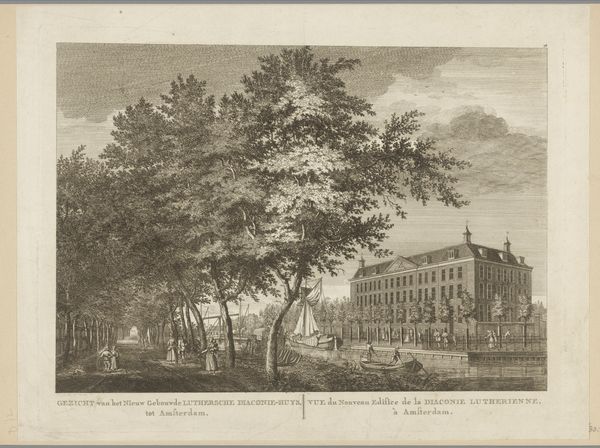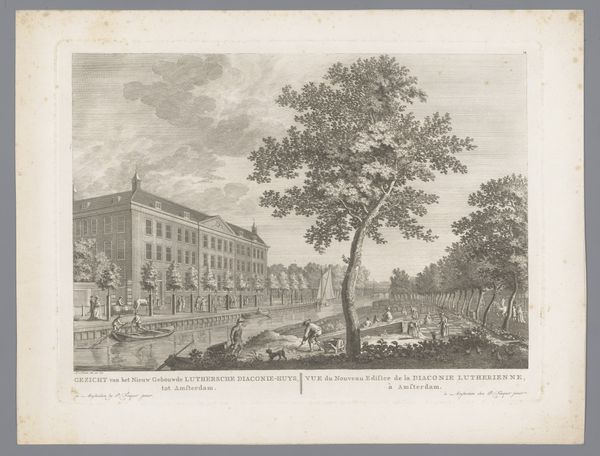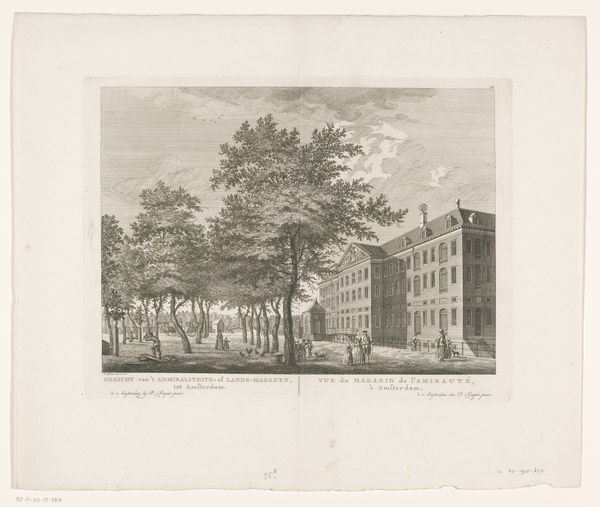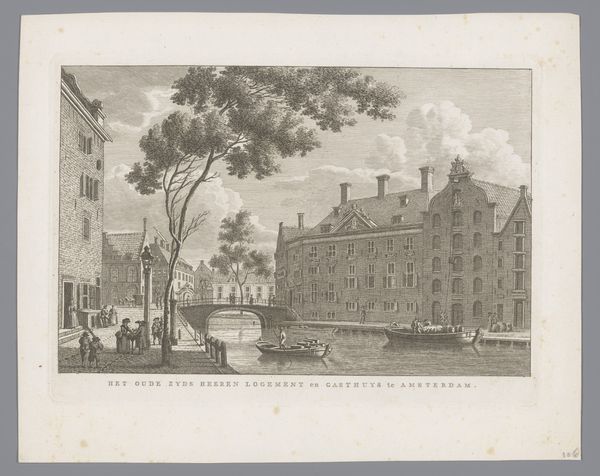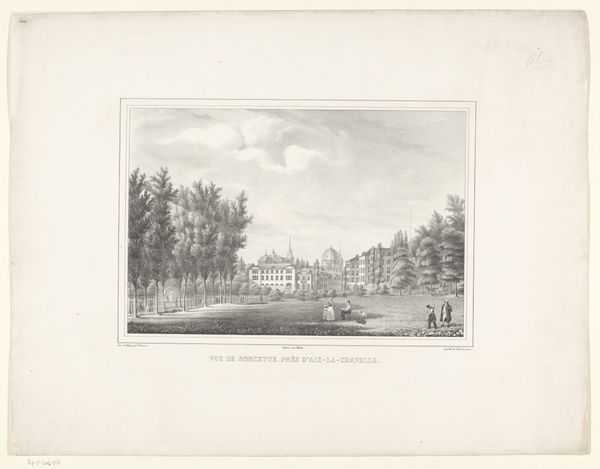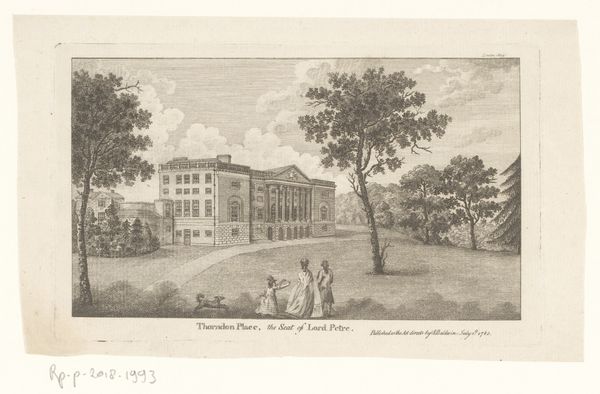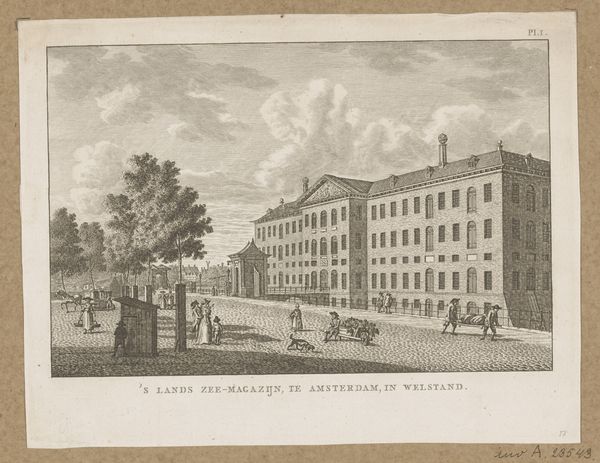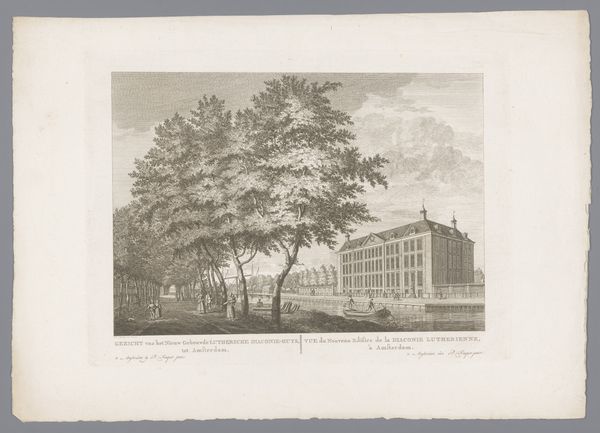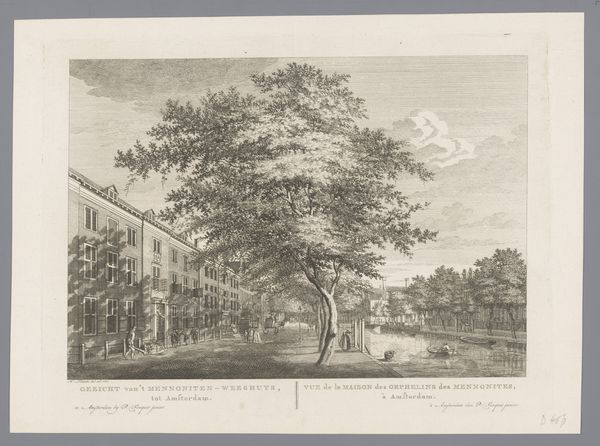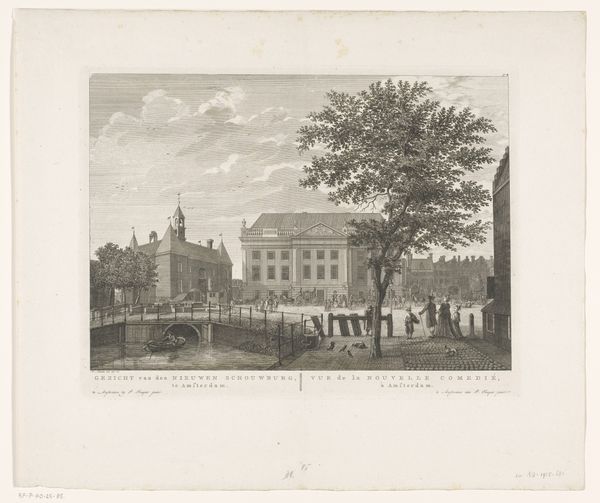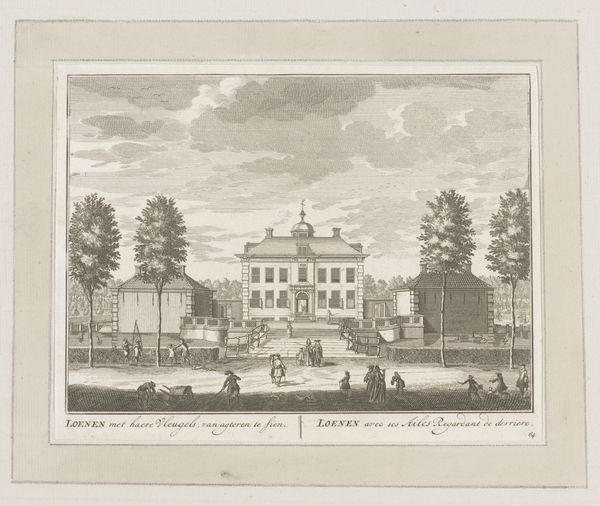
print, engraving
#
dutch-golden-age
# print
#
landscape
#
line
#
cityscape
#
engraving
#
realism
Dimensions: height 279 mm, width 367 mm
Copyright: Rijks Museum: Open Domain
Curator: This is Hermanus Petrus Schouten's "View of the Spin- en Nieuwe Werkhuis in Amsterdam," an engraving dating from 1787. Editor: Immediately, it evokes a sense of serenity mixed with a little... unease, maybe? The light is beautiful, but the looming building makes me think of hushed whispers and secrets. It's almost gothic! Curator: Indeed. The formal arrangement of the architecture juxtaposed with the seemingly casual arrangement of figures certainly creates that contrast. Note the composition: the linear precision of the building sharply differs from the organic shapes in the trees. It speaks volumes. Editor: The light here seems significant. It’s not just light, it feels like a character itself, observing all the characters equally in the scene... it seems strange given the subject matter, no? Curator: Indeed, the sharp light in this engraving highlights both the architectural precision and social nuances of Amsterdam during that time. This "Workhouse" would've served not only as a prison but also a factory, a societal control enacted with "rational" architecture. The almost luminous treatment is not so strange but is rather indicative of the rationalism associated with enlightenment ideals of the time. Editor: It makes one wonder, I'll wager... who are those dogs in the foreground and those figures engaged in what looks like... intense exchange... or, intense conversation along the riverbank? Curator: Good point. We are provided a window here—a calculated arrangement and a curated perspective by the artist. What the artist decided to put there matters. The quotidian—those gossiping people along the riverbank, a random gathering near that monolithic building and a single passerby with their horse. Each group provides context to what may have gone on there in that space... they contrast each other, almost deliberately placed like this. Editor: Absolutely! Like a stage. The light adds such texture, no? The whole work sings. So considered... that realism lends itself to a kind of... enhanced truthfulness? That all of this *did* exist... with a weird, slightly detached sentimentality attached. Curator: I agree wholeheartedly! This visual treatment, indeed, enhances our understanding beyond pure document—allowing us an invitation to contemplate the building not simply as it was but as it existed within the life of Amsterdam. Editor: In just under two minutes, eh? Another layer uncovered—revealed. Quite the experience, that was! Curator: Precisely; through formal observation and expressive interaction we find a space for dialogue.
Comments
No comments
Be the first to comment and join the conversation on the ultimate creative platform.
